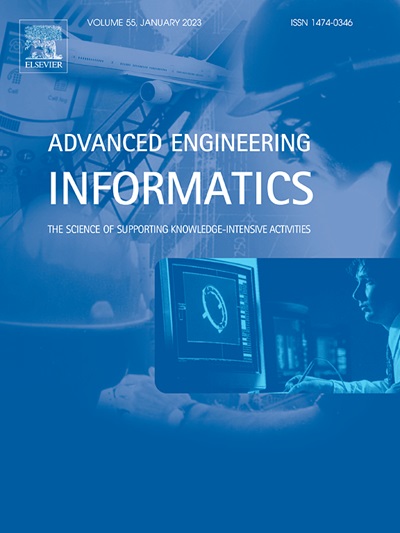A physics-guided approach for accurate battery SOH estimation using RCMHCRE and BatteryPINN
IF 8
1区 工程技术
Q1 COMPUTER SCIENCE, ARTIFICIAL INTELLIGENCE
引用次数: 0
Abstract
Accurate monitoring of a battery’s state of health (SOH) is crucial for ensuring reliable operation. Data-driven methods for SOH estimation often involve complex feature extraction strategies and models that are difficult to interpret, limiting their generalizability. To overcome these challenges, this paper presents a battery SOH estimation method based on the refined composite multiscale Hilbert cumulative residual entropy algorithm (RCMHCRE) and the battery physical information neural network (BatteryPINN). First, the proposed RCMHCRE algorithm is applied to automatically extract high-quality health features from the battery’s voltage and current data, serving as the feature engineering in this study. Second, the network structure of BatteryPINN is developed for SOH prediction, based on the mathematical theory of solid electrolyte interphase (SEI) membrane growth. The proposed strategy enables BatteryPINN to be constrained by the battery aging mechanism during training, thereby ensuring that the network adheres to the underlying physical laws during propagation. To validate the effectiveness of the proposed method, a four-month battery aging experiment is conducted, and a dataset is constructed. Experimental results from three datasets demonstrate that the proposed method offers significant advantages in health feature extraction and SOH estimation compared to other state-of-the-art battery SOH estimation methods, achieving prediction accuracies of less than 1% for both RMSE and MAPE metrics.
求助全文
约1分钟内获得全文
求助全文
来源期刊

Advanced Engineering Informatics
工程技术-工程:综合
CiteScore
12.40
自引率
18.20%
发文量
292
审稿时长
45 days
期刊介绍:
Advanced Engineering Informatics is an international Journal that solicits research papers with an emphasis on 'knowledge' and 'engineering applications'. The Journal seeks original papers that report progress in applying methods of engineering informatics. These papers should have engineering relevance and help provide a scientific base for more reliable, spontaneous, and creative engineering decision-making. Additionally, papers should demonstrate the science of supporting knowledge-intensive engineering tasks and validate the generality, power, and scalability of new methods through rigorous evaluation, preferably both qualitatively and quantitatively. Abstracting and indexing for Advanced Engineering Informatics include Science Citation Index Expanded, Scopus and INSPEC.
 求助内容:
求助内容: 应助结果提醒方式:
应助结果提醒方式:


